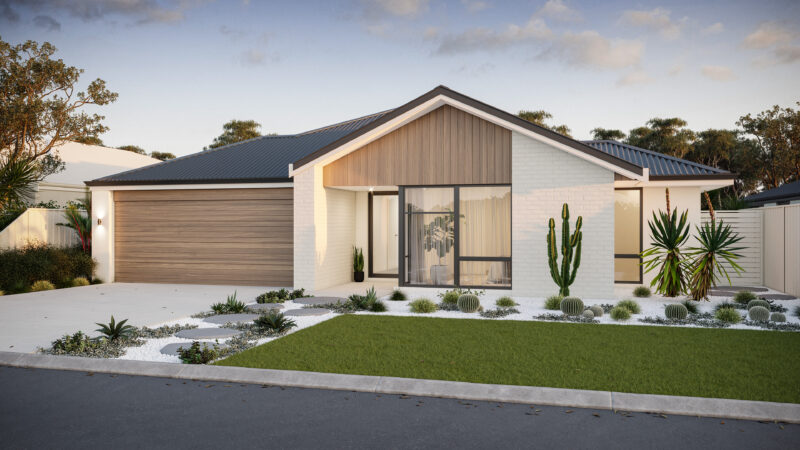
When it comes to starting or expanding an investment portfolio, property investment remains one of the most popular choices. However, in order to enjoy the benefits of such an investment, investors must make smart choices.
In the modern property market, this means looking for new builds that will entice renters and encourage high rental yields. It also means paying particular attention to elements such as location and proximity to services.
By understanding the essence of property investment and the associated pros and cons, you have all the information needed to make smart decisions. This is especially important when you consider that real estate is characterized as being a long-term investment prospect.
In this article we will discuss:
- Investing in property vs other equities (shares, stocks or securities)
- Property investment facilitates financial growth
- The benefits of investing in a new build (rather than an established house)
- The cons associated with buying a new build vs an old property
- Capital growth or cash flow – which strategy to choose?
- The risks you need to be aware of and know how to mitigate
- Understanding the cycles of the property market
- Why build your investment property in the West?
Investing in property vs other equities (shares, stocks or securities)

When it comes to investing, there are many different avenues that interested parties can travel down. One such avenue is property investment. Meanwhile, other avenues include investing in equities such as shares, stocks or securities.
In terms of equities, there will always be a minimum amount of shares or stocks that need to be purchased in order to enter the market. However, from there, any additional investments are completely up to the individual.
It is however important to note that, when compared to the property market, investing in equities is unpredictable. Additionally, the share market is often characterised by prolonged periods of volatility.
Whereas, while there is a cyclical nature to the property market, the highs and lows aren’t so volatile or extreme. It’s also worth noting that real estate is a very flexible investment. For example, you can earn income by renting out the property.
On the other hand, you may choose to live in the property and sell it at a later date when the natural cycle of the market deems the property to be more valuable. Factors ranging from capital growth and tax benefits to cash flow and inflation also make property investors money.
The rapid expansion of technology has ensured that there is another avenue for investment- cryptocurrency. With cryptocurrency, there is no minimum investment amount. However, there are very few regulations in place in order to offer protection to investors.
As such, when compared to property investment, investing in cryptocurrency is a highly speculative venture with an incredibly short life span. Additionally, due to the relative newness of cryptocurrency, there is little intrinsic value and right now, no ongoing cash flow.
Property investment facilitates financial growth
As previously noted, property investment is quite a flexible investment. This is largely due to the five different ways that an investment property can actually work to facilitate financial growth.
Firstly, there is capital growth to consider. This can be achieved when the asset appreciates to values above-average capital growth. This typically happens when strong demand increases property values and when you have tenants helping pay your mortgage through rental yield.
Speaking of rent, this payment also facilitates financial growth through what is known as a cash flow growth strategy. When you have tenants paying rent in order to live in your investment, you have what is known as an increased or positive cash flow.
Property investors can also manufacture a type of financial gain known as accelerated growth. For example, by purchasing an investment that needs a lot of cosmetic upgrades, you can complete those upgrades and therefore garner a much higher sale or even rental price.
There are also tax benefits associated with becoming a property investor. This is because certain tax strategies can do everything from managing cash flow to decreasing tax obligations and therefore, increasing an investor’s bottom line.
Another way that an investment property can facilitate financial growth is through means of natural inflation. By taking on a mortgage in order to effectively spend money to make money, the value of that mortgage diminishes over time because of natural inflation.
The benefits of investing in a new build (rather than an established house)

When compared to other investment options, property investment is certainly an attractive prospect for most individuals. However, when investing in property, individuals need to ask themselves, should I invest in an established property or a new build?
Rather than buying an older property, investors should look at new builds. Offering benefits across the board, new builds provide investors with security, low maintenance overheads and importantly, are increasingly attractive to renters.
1. Tax benefits
A great benefit to consider when looking at purchasing an investment property is that new builds have positive tax implications. For example, you can claim depreciation for seven years. Additionally, furnishing costs can be claimed as tax deductions for up to 10 years.
2. Depreciation value
It’s worth noting that investors can also claim the cost of building the property as depreciation for a period of 40 years. This time frame is specific as it’s the period of time that the Australian Tax Office deems a building should last.
3. Longer warranty period
When purchasing a new build as an investment property, individuals receive a structural guarantee, that is essentially a form of builder’s warranty insurance that affords protection against structural defects or other major issues.
4. Attractive to tenants
As of October 2022, Perth’s vacancy rate is at an all-time low rate of 0.5%. This means that Perth, along with other capital cities across the country are operating in a landlord’s market. Such low vacancy rates mean that there will be a large tenant pool to choose from.
5. Growing rental yield
Adding to the above point, the characterisation of a landlord’s market means that most capital cities across the country are also experiencing growing rental yield. In fact, research from Domain highlights that house rents in Perth increased 4.3% to $480 a week.
Further, median rent for units was also up 2.6% for a total of $400 a week. What this suggests is that tenants are willing to pay more in order to not only enter the market, but to live in a newly built property. For investors, this means a growing rental yield.
6. Security
Houses don’t go broke like companies could. This means that there is more security involved in the investment. If the property market were to face a downfall, a new build, when compared to an older house, is more likely to sustain and even gain value during the next market upswing.
7. Low maintenance overheads
With the builder’s warranty and the new appliances, fixtures and fittings that are installed in new builds, it means that there are low maintenance overheads. This helps investors save money. Importantly, investors won’t need to stress about providing frequent repairs.
8. Shortage in housing generates more demand for new builds
Perth is currently struggling with a shortage of homes. In fact, fewer than 14,000 new homes and apartments were built in 2021 due to problems with labour and supply. While this sounds dire, it means that there will be increased demand for new builds for years to come.
The cons associated with buying a new build vs an old property
While there are a myriad of benefits associated with investing in a new build property, like any investment, there are potential negatives involved. Namely, the fact that new builds by nature will be more expensive, and thanks to a housing shortage, harder to come by.
1. Less affordable
The first negative to consider is the fact that there are high entry costs associated with purchasing a new build. This is highlighted by the fact that Core Logic data outlines that Perth dwelling values are currently experiencing record highs.
2. Supply issues
There are also limited opportunities when it comes to new builds due to supply issues. Australian Bureau of Statistics figures indicate that less than 14,000 new homes and apartments were built in the last year in WA. This means that investors will need patience.
Capital growth or cash flow – which strategy to choose?

When purchasing an investment property, there are different strategies to choose from. Some investors might place value in capital growth while others place increased importance on cash flow. To understand which strategy to choose, it’s important to understand both options.
A cash flow strategy essentially means investing in a property with the potential for high rental yields. As such, the rental income will be greater than the total expenses- mortgage repayments or repairs- associated with the asset. However, the return upon sale is typically lower as these properties are often in average locations or need renovations.
A capital growth strategy is firmly focused on buying properties that will produce above-average increases in value over long periods of times. In the short term, it means that rental yield will give investors a positive cash flow. In the long term, investing with this growth-focused mindset and opting for a new build means the price of the asset will only increase.
The risks you need to be aware of and know how to mitigate
Whether you choose to invest with a capital growth or cash flow mindset, there are risks that individuals looking to build an investment portfolio need to be aware of. These risks encompass factors dealing with the property market and the broader economy.
To start with, there is what is known as a market risk when it comes to property investment. This is because the property market moves in cycles. This is a risk to those who are investing short term as they may need to sell during a down period. However, investors can mitigate this risk by viewing property investment as a long-term prospect.
The next risk revolves around liquidity. Circumstances change overnight. This may mean that you need to sell your property to access valuable financials. However, liquidity cannot be achieved easily due to the length of a sales campaign. Mitigating this risk comes down to diversifying your investment portfolio or even placing a portion of rental yield in a separate fund as a contingency.
Another risk to property investors is interest rate rises. For those with a variable-rate mortgage, any changes in interest rates will affect the size of your debt. All of which impact cash flow. To lessen the effect of changing interest rates, investors may like to take out a smaller mortgage or lock in a fixed-rate mortgage.
Another risk that impacts cash flow is choosing the wrong property. In essence, a property that is not deemed investment grade. This is a sizable risk as the wrong property in the wrong location can negatively impact both short-term cash flow and capital growth.
Finally, investors may be subjected to a cash flow crunch if tenants were to vacate the property. If contingencies aren’t in place, this sudden vacancy may mean that the property sits empty for months, garnering no rental yield. In a landlord’s market this is unlikely to happen, but as a safeguard, utilising a property manager with a portfolio of rental clients might be wise.
Understanding the cycles of the property market
The property market is inherently cyclical. As the saying goes, what goes up must come down. However, unlike other markets, it’s not always a good idea to buy during these up periods.
This is because, when the property market is near its peak, prices are also near the peak. Meaning that you may pay more for a property simply because the demand is there, not because the property is an attractive proposition.
While timing the market is a great idea for those looking to buy homes or units for personal use, the same cannot be said for investors. At the end of the day, time in the market matters more than timing a purchase as it is what lays the foundation for capital growth.
Why build your investment property in the West?

One of the key factors to a successful investment is choosing a property in the right location. With this in mind, a recent rental report compiled by Domain found that rental yields for houses and units are at the highest point on record for Perth. Showing that investing in the West is a smart proposition compared to other cities in Australia.
In more detail, house rents in Perth increased 4.3% over the last quarter, commanding $480 a week. Median rent for units was also up 2.6%, the highest point since 2014. This means that weekly rent for units was $400. Meanwhile, Perth’s median house price is currently $560,020.
Investing in Sydney, asking rents for houses currently sits at a record high, resulting in a median rent of $600 per week. Unit rents saw an increase of 2% over the quarter, sitting at $500 a week. However, the median house price in Sydney is the country’s most expensive at $1,087,376.
Melbourne is currently the most affordable city to rent a house, with weekly rent hovering around $450 a week. Melbourne’s landlord’s market means that unit rents have also increased by 4% to $390 a week. Additionally, the median house price is $791,999.
Brisbane’s median house price is only slightly less than Melbourne’s and currently sits at $781,850. However house rents in Brisbane surged 4.2% to a record high of $500 a week. Unit rents increased by 2.4% to a high of $430 per week.
Over in Adelaide, the state is currently experiencing the longest period of continuous rent growth in its history. As such, house rents have increased 3.3% which correlates to $465 a week payments. Unit rents increased 5.6% and are $380 a week. Further, the median house price is $650,047.
Canberra’s median house price has increased to $925,973 and so too has the rental market. House rentals are up 3.7% for a record high of $380 a week. Meanwhile, unit rents are 8% more expensive than last year and 1.9% more than last quarter, commanding $540 per week.
Hobart’s rental market also hit new record highs for the state. As such, house rents increased 4% and unit rents surged 4.7%. Resulting in $520 and $450 weekly rental payments respectively. The median house price in Hobart is currently $723,066.
Finally, Darwin’s median house price of $506, 860 is among the cheapest in the country along with Perth. In terms of increases, house rents rose 1.7% over the last quarter, resulting in weekly rents of $610. Unit rents rose 4.2% which equates to $500 weekly rent payments.
Why investing in a new build is a smart investment strategy
When it comes time to researching potential investments, there is a lot for individuals to consider. In order to make the right decision, would be investors must look into equities such as stocks and bonds, cryptocurrency and the popular choice of property investment.
While to some, property investment may seem as simple as buying a great house in a great street, there are many more factors to consider. Namely, will you invest in a new house and land package or an established property?
Complete with benefits ranging from increased returns to less maintenance and therefore reduced stress, investing in new builds is a smart investment strategy. As long as investors realise that, due to the cyclical nature of the property market, investments must be long term.
Yet one final question remains, where should you invest? Factors pertaining to the construction industry and the property market have combined to ensure that investing in the West is an astute proposition.
With Perth enjoying a comparatively low median house price and unprecedented growth in rental yield for houses and units, investors stand to benefit from investing in the West. When it comes to finding the best location for your investment property, contact Plunkett Homes.



